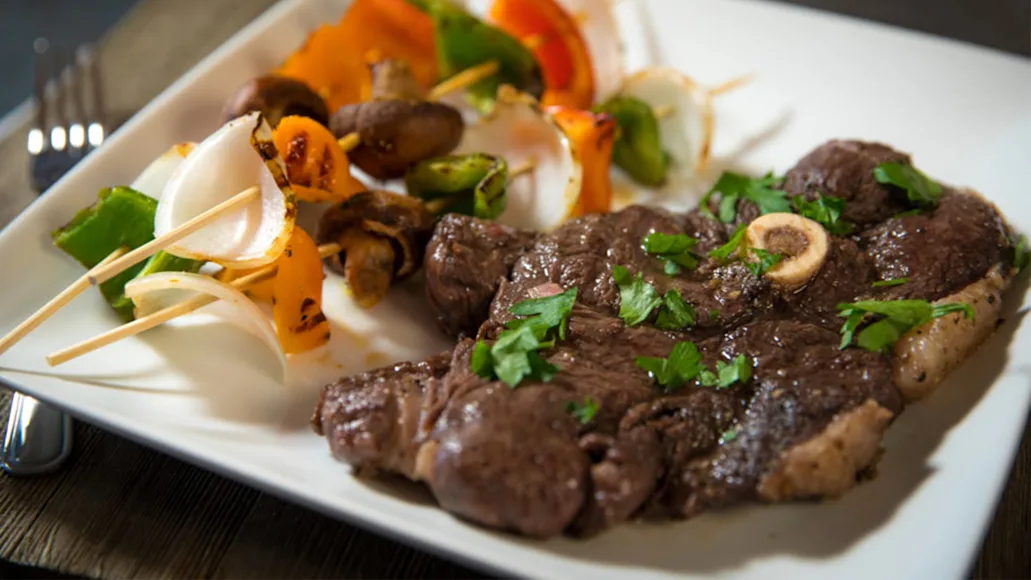What does bear meat taste like? Well, it can be a little hard to imagine without picturing a dish of prepared bear. So, how about marinated bear steak with vegetable kabobs? That’s what’s in the photo above, from a recipe featured on the Virginia Department of Wildlife Resources website
. Looks good, right?
Or how about Black Bear Osso-Bucco? Or maybe Sweet & Sour Bear Pot Roast? A little Bear Gumbo, anybody? These and other recipes are all in the New Jersey Division of Fish & Wildlife Black Bear Recipe Guide
. The Garden State is home to a lot of bears, and maybe your home state is, too. But if you haven’t hunted them yet because you’re concerned about what the meat will taste like, well, don’t let that stop you. Bear meat really good if you cook it right. Bear meat is also nutritious, packing 20 grams of protein and 7.2 milligrams of iron per 100 grams. Whether you’re hunting in the spring or fall, try bagging a bear this season, and you’ll have a freezer full of high-quality meat.
Learn how to subscribe to the new Field & Stream magazine here!
What Does Bear Meat Taste Like?
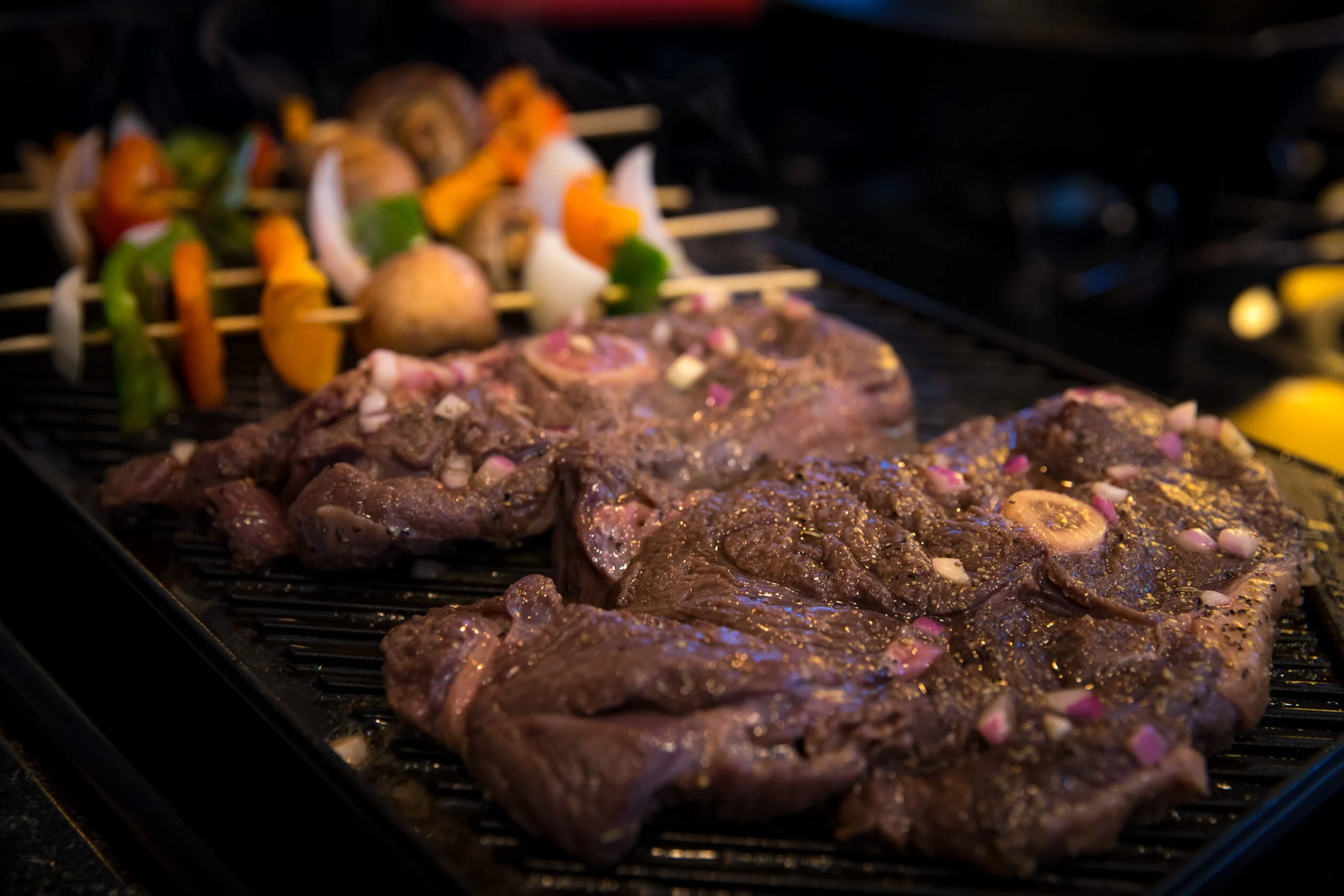
Nothing like steaks cooking on the grill, including bear steaks. Courtesy of the Virginia Department of Wildlife Resources
To me, bear meat is like a mix of venison and pork. It’s a dark, rich red meat packed with flavor. Unlike other red meat, though, you shouldn’t eat rare or medium-rare bear meat for safety reasons. It’s best used in slow-cooked recipes or any recipe you’d use pork for. Bears are also fattier than other game meat, in a good way. But depending on what the bear has been eating, the meat can taste a little different, which we’ll get into in a bit.
Table of Contents
With Bear Meat, It’s All About the Fat
How to Find Good Bear Meat
What Makes Bear Meat Taste Bad?
Do You Have to Be Careful With Bear Meat?
Frequently Asked Questions
It’s All About the Fat
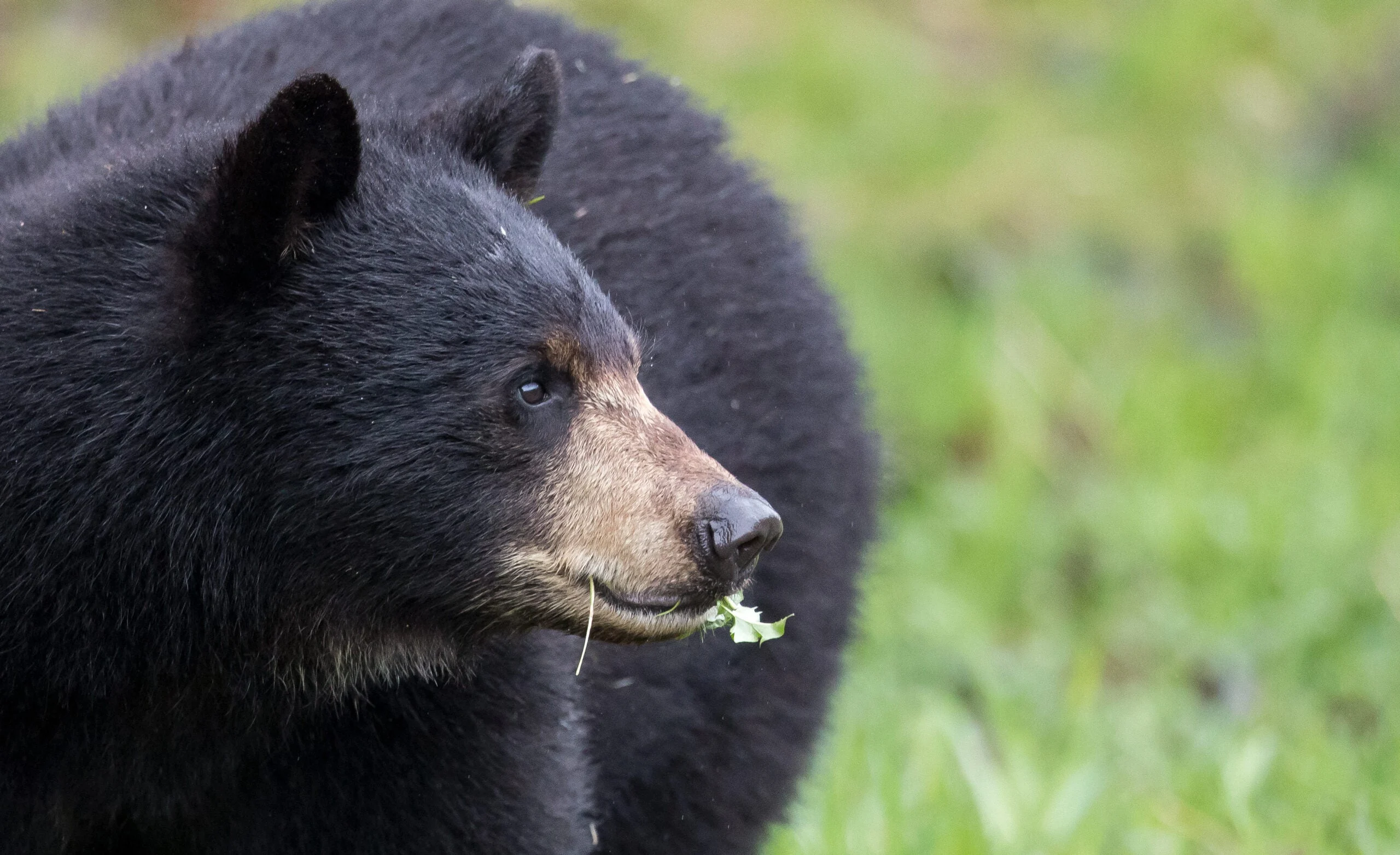
Bears that have been eating grasses and forbes will usually have good-tasting meat and fat. Brittany / Adobe Stock
Most wild game meat doesn’t have a lot of fat, and when it does, it can taste a little sour. But bear meat is different. I’ve heard some hunters describe it as the pork of the woods. Early American settlers used to make bacon out of it. Rendered bear fat was also prized for cooking and other uses. Today, some people set bear fat aside to make pie crust, tortillas, or to grease up a skillet.
But there’s a catch with bear fat. It can take on the taste of whatever the bear has been eating. Bears that munch on blueberries or beech nuts all August and September will have delicious fat. Bears that raid garbage cans might not be so great, unless the garbage cans are full of donuts. Fat from bears that eat a lot of dead salmon is said to taste fishy. It really depends on what the bear is eating.
The fatty nature of bear meat lends itself well to slow-cooked roasts. One of my favorite dishes from a local hunter is corned bear. Bear meat is also good when ground for things like sausage and meatloaf.
How to Ensure Your Bear Will Taste Good
If live in America, you have to either hunt bear or know a hunter who will give you some. It’s illegal to sell bear meat and other wild game in stores or restaurants. One of the main upsides to this is that, as the hunter, you can make some choices to help ensure you bear will taste good. Most bears shot in the wild will be more than palatable. That said, targeting bears that you suspect are mostly foraging on mast, fruit, or agricultural crops will certainly up the odds of great-tasting bear meat. By the same token, you might want to avoid bears that you suspect are eating lots of dead animals, fish, or trash. If you notice a foul smell when cutting up bear meat, chances are the meat isn’t going to taste great.
What bear meat tastes like will also differ depending on time of year. Bears in the spring will mostly be eating green vegetation. They tend to be leaner and generally taste great. Bears in the fall are eating whatever they can get before hibernation. This isn’t necessarily a bad thing, though. Fall bears will have more fat that can be rendered, and if they’re gorging themselves on things like acorns and berries, they can be very good.
What Makes Bear Meat Taste Bad?
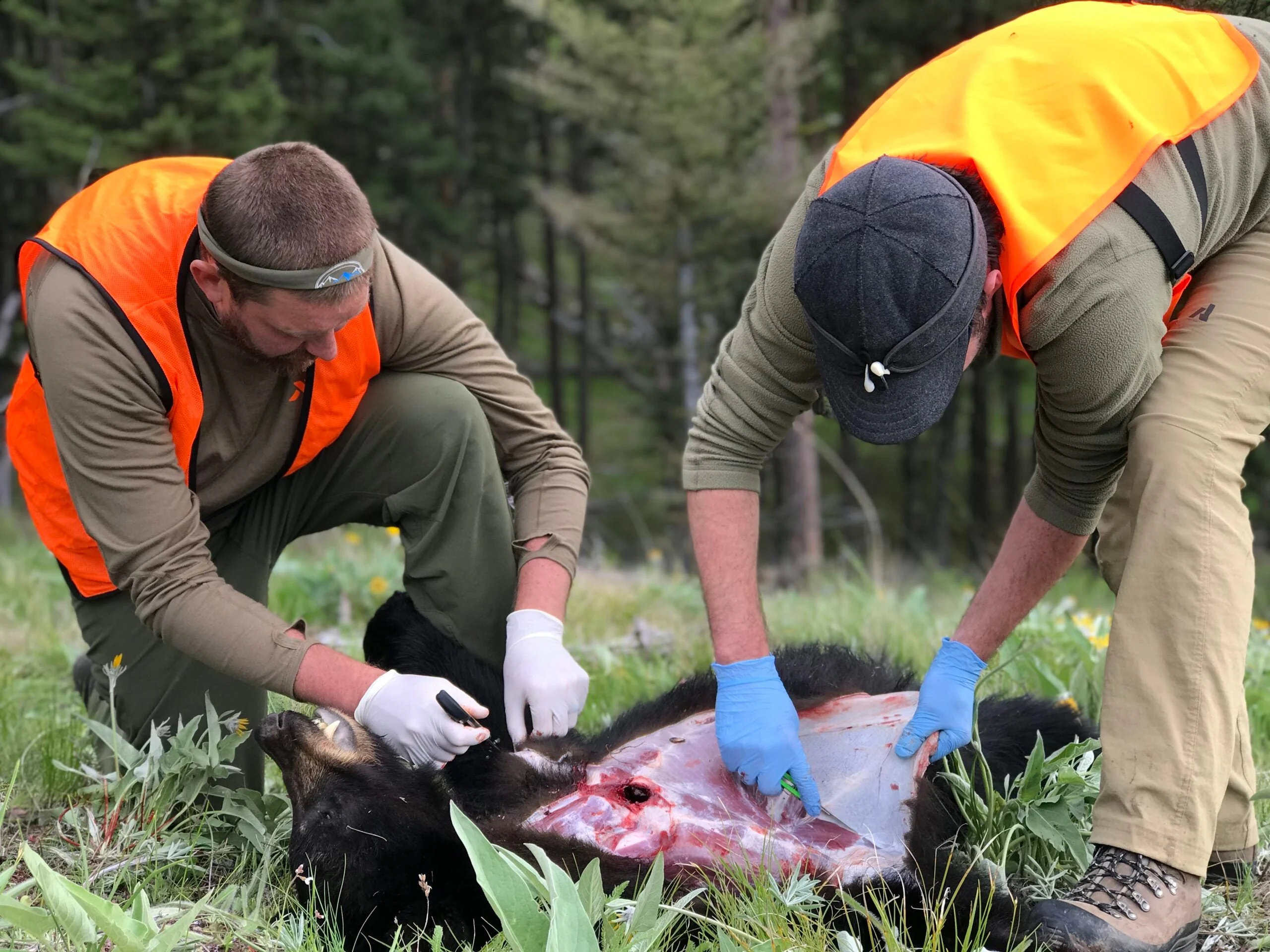
Field care can play a role in how bear meat tastes. In warm weather, it’s a smart to skin a bear as soon as possible. Trey Curtiss BHA Conservation Programs Coordinator
Besides what bears are eating, their meat can also be affected by field care. If you are hunting bears in warmer weather, it’s especially important to get the skin off of the animal quickly, so it can start cooling right away. The same goes for gutting and quartering. If you have the option, it isn’t a bad idea to have a cooler full of ice in your truck before you go bear hunting in warm weather. That way, you can start cooling the meat down as fast as possible.
Do You Have to Be Careful When Cooking Bear Meat?
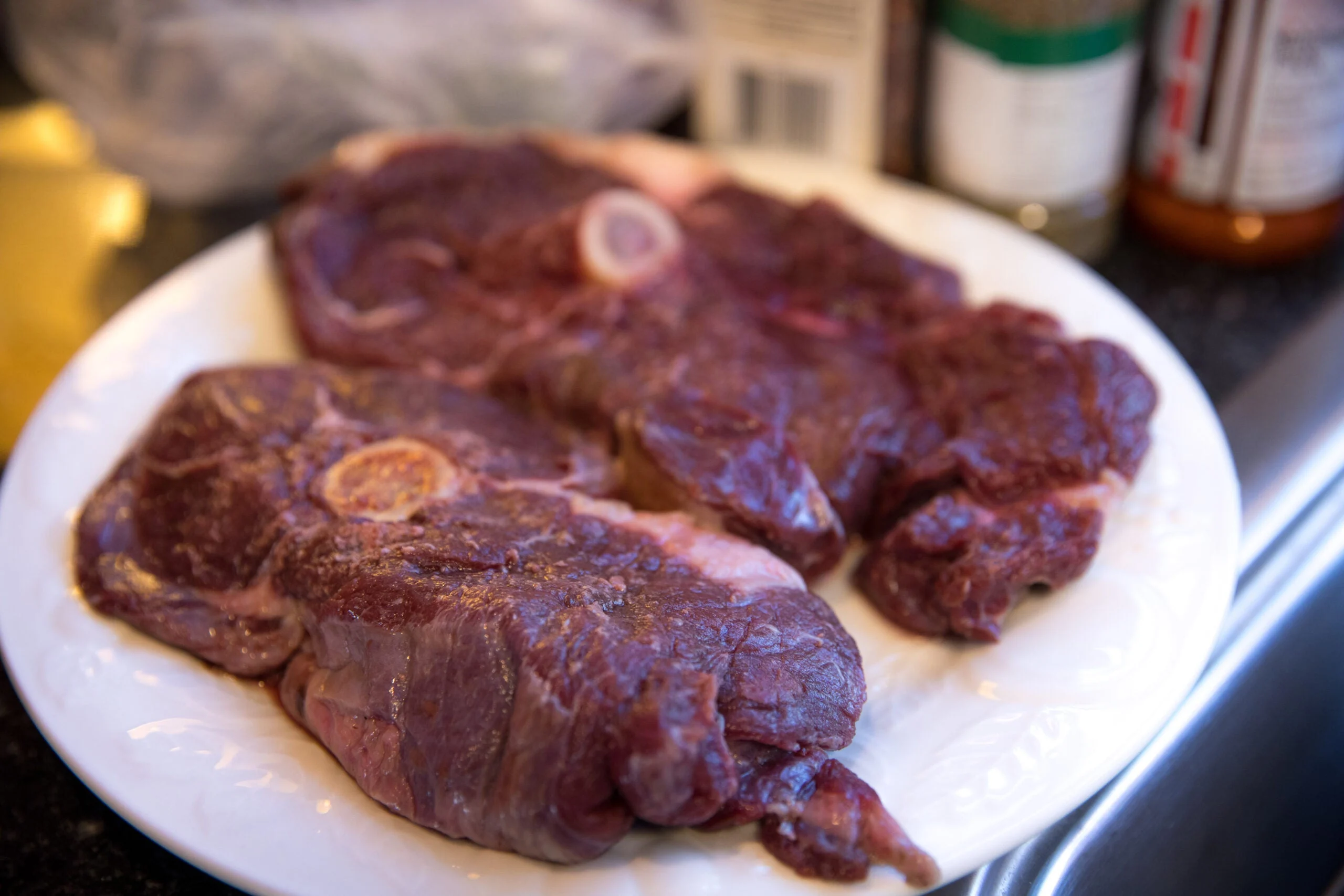
It’s important to cook bear meat thoroughly. Raw, rare, or even medium bear meat can make you sick. Courtesy of the Virginia Department of Wildlife Resources
Yes you do. Bear meat can make you sick if you don’t cook it right. You can play fast and loose with venison, and most agree that it tastes better on the medium rare to rare side. Bear meat isn’t like that. They can host all sorts of nasty things. The big one is trichinosis, a food-borne disease caused by microscopic parasites. The symptoms starts with diarrhea, but eventually, they worsen to headaches, fever, fatigue, severe muscle pain, and difficulty breathing.
Trichinosis used to be a big issue in pork products. That’s why the USDA once recommend cooking pork to an internal temperature of 160 degrees F. We used to feed pigs all sorts of things, leading them to get and give trichinosis. Now that they’re mostly on a grain-based diet, the USDA lowered the recommended temperature of pork to 145 degrees.
Bears still eat everything, so you need to cook all bear meat to a 160-degree internal temp for 3 minutes or more before you eat it. Another good rule of thumb is to cook bear meat at 375 degrees F for 20-25 minutes per pound. Some like to take bear meat over 160 degrees just to be safe. If you do, you’ll be sure to kill off any harmful parasites. And then you have your answer to What does bear meat taste like? If you follow a good recipe, like the ones above. Or these for Black and Blue Bear Chili
, it should be delicious.

